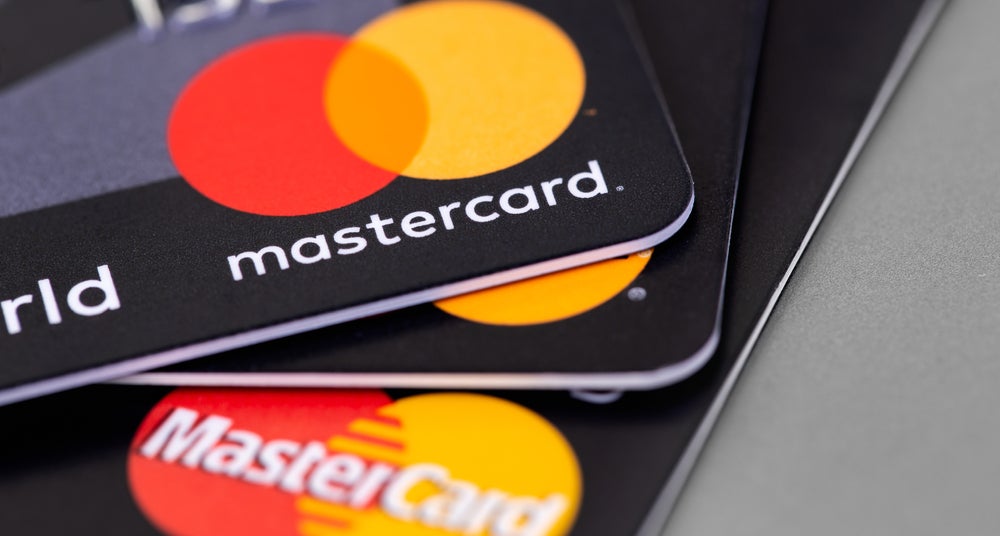Bartholomew-Keen, business leader of prepaid Europe at
MasterCard, outlines how growth estimates for prepaid are shaping
up amid the current turbulent economic backdrop and looks at the
European markets where prepaid promises the most potential.
Time certainly does fly, as we already find ourselves well into the
fourth quarter of 2008. No doubt, many of you reading this will
already have your financial directors breathing down your neck as
you plan budgets for 2009 and try to predict the potential impacts
on business models of breaking into or expanding within the
lucrative prepaid space.
An outstanding range of prepaid products have already emerged
across all sectors of the market; from Polish immigrants sending
money home to innovative prepaid devices designed to improve
cardholders’ credit scores. But where can we expect to see growth
going forward? What does the future hold for prepaid in
Europe?
In this article I’ll be looking at the forces conspiring to shape
the European prepaid market, not only during the year ahead, but
also deep into the next decade. Drawing on the findings of new
independent research commissioned by MasterCard Europe and
undertaken by PSE Consulting, this article will explore the
prospects for future growth in the prepaid marketplace, identifying
the market segments most likely to offer growth prospects, as well
as those markets which are set to offer the best opportunity for
expansion.
Meanwhile, the implications of these predicted trends will be
assessed in terms of their impact on business models by asking who
is going to invest in the prepaid market across Europe, Turkey and
Russia.
What is the European market opportunity?
How well do you really know your competitors?
Access the most comprehensive Company Profiles on the market, powered by GlobalData. Save hours of research. Gain competitive edge.

Thank you!
Your download email will arrive shortly
Not ready to buy yet? Download a free sample
We are confident about the unique quality of our Company Profiles. However, we want you to make the most beneficial decision for your business, so we offer a free sample that you can download by submitting the below form
By GlobalDataAccording to PSE’s research, by 2015 the prepaid market is likely
to generate a turnover of €132 billion ($165 billion), across an
established card base of 418 million and transaction volumes of 4.4
billion.
By looking at this from an open-loop perspective, the market is
expected to account for 45 percent of the prepaid transaction
volume with a turnover of around €79 billion. Not an insignificant
value I am sure you will agree.
In terms of country-specific market growth, the UK is expected to
maintain its lead over its continental counterparts, but slip
slightly as we see the emergence of new markets, with France and
Germanic countries standing out as potential markets of high
growth.
Sector analysis
Gifting is likely to remain the dominant product within the prepaid
armoury, representing the biggest opportunity for closed-loop
products, with nearly a quarter of the European total for both
transaction volume and turnover by 2015.
However, concerning open-loop, the focus of European growth will
continue to be on consumer and institutional offerings, with
government and corporate cards (including business travel and
entertainment, along with luncheon vouchers) accounting for 20
percent of the market, and payroll for a further 10 percent.
Youth is a category seen to be lucrative across multiple markets,
both today and in years to come. From a transaction volume
perspective, youth is an area that is likely to perform well, with
expectations that by 2015 it will represent 16 percent of prepaid’s
total transaction volume in Europe. However, projections reveal
that while this sector leads the way in terms of volume, it is
challenged by an overall lower average transaction volume, which
some processors speculate reduce its attractiveness.
The challenge with banking on the youth market is that they do not
typically have much disposable income, meaning that as a group they
are more sensitive to price and cost, and therefore typically spend
on lower value items.
However, if we take a long-term perspective on this, it need not be
a cause for concern.
Healthy youth participation in the prepaid market is one of the key
drivers of innovation, encouraging the pursuit of involvement in
youth issues and next-generation technologies such as mobile
banking. Pushing the boundaries in prepaid products for the youth
community is the UK government, which has recently started a pilot
project to deliver a monthly allowance to disadvantaged students,
through their g2g prepaid Maestro card.
And what this group lacks in terms of value, it more than makes up
for in volume; an area that is vital for the continued survival of
prepaid for generations to come. Strong participation by the youth
market today should be seen as a positive step towards increased
uptake of prepaid by the adults of tomorrow, whose already cemented
trust and understanding of the product will translate into future
growth in the industry.
Perhaps the most surprising development to come out of PSE’s
research is the rise (and rise) of online. In response to the
question, ‘Which prepaid segments have surprised you most over the
last two years?’, experts pinpointed progress made in the online
market, highlighting prepaid’s strength relative to other card
products (credit and debit) for this type of payment.
And this trend looks set to continue into the next decade as
tighter budgets and rising costs of shoe leather drive consumers
off the high street and online. When you combine this with
ever-growing fears surrounding identity theft, this market segment
provides the perfect opportunity for prepaid, which offers
cardholders a pre-agreed limit to the amount of money that can be
loaded onto their card, making it the safest type of payment
vehicle when it comes to shopping online.
This is reflected in PSE’s research which expects that by 2015, the
average transaction value for online payments is likely to be on a
par to that of debit cards (€63), demonstrating a real crossover
for prepaid into the mainstream retail market.
There are however some market segments whose growth has been
identified as problematic in Europe. Remittance for example has
struggled to meet the potential previously attached to it as a
sector, mainly due to issues on the recipient end rather than the
sender side, where US experiences have not been capitalised upon.
However, there are strong regional differences in this sector. In
Germany and Spain, remittances have not met expected levels despite
the number of non-EU migrants in these two geographies, but
performance in Benelux and France has been better than
expected.
Market analysis
The geography of prepaid is notoriously varied. While there is a
general trend towards government and public sector applications
constituting the biggest opportunity in Central and Eastern Europe
(CEE) economies, the balance of sector opportunity varies wildly
from market to market.
In less advanced card economies such as Turkey, Russia and the CEE,
government benefits, payroll and the underbanked are likely to be
the most successful sectors.
Taking a more general view of prepaid as a whole, France, the
Germanic countries and the UK and Ireland stand out as potential
markets of high growth. Promisingly, of the 50 European prepaid
experts who responded to the PSE survey questionnaire, 75 percent
believed that prepaid would account for over 10 percent of
transaction by 2015, striking a positive chord as to the future
success of prepaid.
Interestingly however, when attractiveness is matched against local
market conditions that influence ease of entry and addressability,
a slightly more complex picture begins to emerge. While the
Germanic countries are highly attractive, they are not easy to
enter, and at the same time France remains a complex market for
non-French players.
The Italian market meanwhile, although perhaps not being obvious at
first glance, is of reasonable size, with relative ease of entry
(perhaps more so for processors) and thus may look more appealing
to prospective issuers in spite of high levels of local
competition. Whereas Russia, which represents by far the largest
potential market in terms of transaction volume, remains less
attractive at present due to its prohibitive regulatory
environment.
Impact on industry thinking
It is clear from PSE’s research that Europe is not, and will not
become a homogenous market, due to the fact that it is already so
regionally diverse.
Each country has its own banking rules and customs, not to mention
wildly different consumer attitudes towards cash and prepaid, debit
and credit cards. Much of prepaid’s success to date has been down
to the fact that it appeals to a wide range of niche markets,
thanks to the impressive list of applications it offers.
However it is clear that nobody is going to build a pan-European
prepaid business based on a niche approach. That is not to say
there is not scope for mass-market saturation in the future. While
penetration levels of all types of prepaid cards may be regarded as
modest in the near future (2010), by 2015 the indicators are that
prepaid will have reached critical mass, with approximately 60
percent of the European population having some form of closed- or
open-loop prepaid card.
But it is unlikely that prepaid will seize substantial ground from
the credit and debit market, not in the near future in any case.
Research shows that Western consumers in particular believe that
prepaid cards are in themselves expensive, and do not add value on
their own; a barrier that makes the development of strong business
cases a challenge.
This is particularly the case in Western Europe where most
consumers have a choice of banking products, generally at a low or
zero cost.
It is essential, therefore, for issuers to convince consumers of
the benefits of transaction fees in those environments where
consumers are not typically used to them or where the only fee paid
(for say a debit card) is an annual one. As such, there is a
growing tendency towards thinking, from issuers such as M-Cube,
that prepaid cards should be free at the POS. However, this kind of
radical change to the market is certainly a long way off.
Generally speaking, the long-term impact of the credit crunch may
be a driver for prepaid growth, as consumers grow ever more
conscious of the need to budget.
While PSE’s research expects that prepaid’s uptake by the
underbanked will only represent 6 percent of the market’s turnover
by 2015, we may in fact see this figure rising considerably as the
real effects of the current financial turmoil take hold. And not
just in developing markets where the underbanked populations are
large such as the CEE and Russia.
In Western Europe too, worries over banks’ liquidity and growing
mistrust of the backhanded practices of even our most established
financial institutions, have driven many people out of the ‘banked
community’, forcing them to search for alternative avenues for
financial security. This may resultantly be a driver for prepaid’s
usage in the West for everyday purposes, bringing the CEE and the
rest of the EU closer together in this regard.
Some UK banks and prepaid providers, leveraging the well-documented
success of prepaid saturation within Eastern Europe, have now also
tapped into a different underbanked community; namely the lucrative
migrant worker market. Last year, British bank Lloyds TSB signed up
100,000 Polish immigrants during a five-month period for a prepaid
card they could use for remittances.
Who is going to invest in prepaid and what are the
barriers?
Merchants and banks have similar views when it comes to their
drivers to issue prepaid products. Both are looking for additional
revenue streams, to seek new customer segments, provide new
services and keep existing customers.
Merchants see the opportunity to create revenue streams in terms of
branding and building loyalty over time, but many are put off by
the cost of upgrading systems in an increasingly competitive
market.
This is because, being at the consumer/payment interface requires a
great deal of effort and resources to educate consumers about the
merits of new products versus the ones they already have in their
pocket.
But prepaid is likely to remain attractive as a testing ground for
technology, so long as those involved can maintain their
entrepreneurial spirit and flexible way of thinking.
Big banks may see opportunities post-crunch to support sensible
spending amongst their customer base; a sure sign of lessons
learned from the credit excesses of the past decade. But this will
be balanced against the need for them to boost awareness through
consumer awareness campaigns.
However, the industry should not be deterred from investment in
marketing and advertising. While some respondents during PSE’s
research expressed concern regarding the costs associated with
promotion, the general consensus is that, while they remain
significant, they will be relatively less so by 2015.
According to PSE, this may reflect a general belief that as
consumers become more comfortable with the concept of prepaid,
there will be a significantly reduced need for cardholder
education.
In Poland, regarded as the most mature prepaid market in Europe,
consumer awareness is no longer an issue, and as such, banks in
this region have been leading the way in terms of investment in
prepaid for some time. Many Western banks could certainly learn
from the example set by ING Bank Slaski, a member of ING Group,
whose prepaid products have quickly gained traction with both
corporate customers and employees alike.
Interestingly, US banks are also taking a lead role in bringing
innovation to Europe’s developing prepaid markets, investing
heavily in new banking services within Central and Eastern Europe.
One US corporate bank is already operating 15 local authority
programmes in the region.
In conclusion, prepaid programme managers will continue to have a
valuable role to play in prepaid development in Europe over the
next decade.
Their specialist expertise is not going to be harnessed overnight
by the big banks that, in Western Europe in any case, have been
slow on the uptake. It is likely that the market will continue in a
‘test and learn’ phase for some time as issuers refine their
propositions and consumers get used to using the products.
What is certain is that the potential market is vast and there for
the taking.
CASE STUDY
Delivering funds and self-esteem: Raphaels
Bank pilots card for disadvantaged youngsters
Do positive activities outside school improve disadvantaged
students’ confidence and classroom performance? The UK government
has started a pilot project to find out.
The pilot activity calls for local authorities to source a means of
delivering a monthly allowance to each eligible student. One local
authority – the Cambridgeshire County Council (CCC) – has engaged
Raphaels Bank to develop a prepaid card as the means of providing
the funds.
A solution meeting a multitude of needs
Raphaels Bank teamed up with MasterCard to launch the g2g prepaid
Maestro card programme in spring 2008. As the card is not a teen
card, or a payroll card, or a benefits card – but has aspects of
all three – Raphaels and MasterCard worked closely together to
create an innovative solution. The result is a prepaid card
programme that meets a complex mix of criteria.
The students collect their card and PIN number from a social worker
(or similar care professional), which ensures they always receive
information, encouragement and support for using the product.
Delivering value to new cardholders
There is little doubt that most of the youngsters in receipt of a
g2g card would not have been able to afford or obtain a mainstream
financial product.
This programme gives them a chance to enter the financial world in
a safe and limited way, while giving them access to funds and a
means of payment they would otherwise have been unable to
enjoy.
Social as well as financial inclusion
The programme strongly supports CCC’s inclusion agenda to give
disadvantaged young people opportunities to undertake activities
that their more affluent peers take for granted, particularly
regarding financial inclusion.
Alternative means of delivering funds – council vouchers, a
complicated system of cheque issuing and tracking, or controlled
cash distribution – lack appeal to young people and cause
operational difficulties for councils. By using a prepaid card, the
students are fully engaged and integrated with their support
network.
CASE STUDY
‘Customised’ prepaid cards: ING Bank Slaski
offers suite of Maestro and MasterCard cards
A member of ING Group, ING Bank Slaski SA is a financial
institution, whose principal product and service offerings include
corporate, investment, retail and private banking solutions.
To target and reach potential prepaid customers, ING Bank decided
to offer a set of products, segmented according to how the prepaid
card could be used.
The bank developed an integrated and flexible marketing and
distribution programme for issuing ‘customised’ prepaid Maestro and
MasterCard cards, whose uses range from paying business travel
expenses to providing employee bonuses.
An innovative suite of prepaid cards
ING Bank uses its own internal systems to provide all the card
services and processing related to its prepaid cards. Here are the
most popular cards among the Bank’s customers:
The Business Settled in Polish Zloty Prepaid Card
is aimed at companies employing sales representatives, drivers or
agents who collect cash advances in connection with business trips.
The company buys the cards and owns the funds deposited in the
associated card accounts. As a result, expenses can be easily
monitored and controlled, and any unexpected events that
necessitate extra cash can be responded to quickly.
The Business Settled in Euro Prepaid MasterCard
Card provides the ability to settle all transactions in
euros, which makes it a perfect solution for Polish companies
trading with partners that are incorporated in the eurozone.
As the transactions made with the card in the Monetary Union
countries are settled in euros, the company is protected from
foreign-exchange fluctuations.
The Corporate Prepaid Maestro Card, also referred
to as an ‘electronic purse’, gives the cardholder access to funds,
even if he or she has no personal bank account. There are two types
of corporate prepaid cards that companies can choose from: the
‘Bonus/Remuneration Prepaid Maestro Card’, used to reward employees
with occasional bonuses or to pay wages to persons not having
personal accounts; and the ‘Promotional Prepaid Maestro Card’, used
in support of loyalty programmes for the company’s partners.
For each of these cards, ING Bank has designed issuing and
distribution procedures to provide the prepaid card and PIN to
cardholders either in person via the bank branches or directly by
mail.







